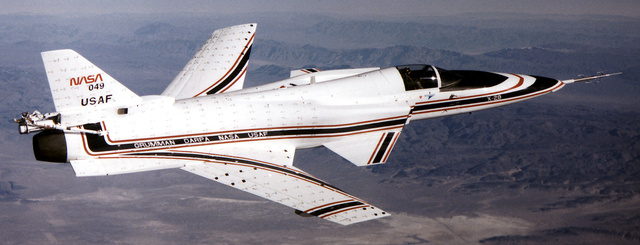This Weird Looking Plane Can Break the Sound Barrier. Was Made in the 1980s [VIDEO]
Dec 27, 2013 22:20

The X-29 experimental aircraft developed by Northrop Grumman in the early 1980s was one of the first attempts at using forward swept wings and fly-by-wire conrols.
The unique wing design was made possible by using composite manufacturing a decade earlier. Grumman engineers were able to reduce the amount of aeroelastic divergent twisting that hampered earlier Nazi planes with similar designs while drastically reducing the weight of the components.
The result? It improved the plane's agility and offered a maximum attack angle of 67 degrees, compared to the max 45 degree angle that an F-15 can pull off.
As NASA's Dryden Flight Research Center site explains,
The particular forward swept wing, close-coupled canard design used on the X-29 was unstable. The X-29's flight control system compensated for this instability by sensing flight conditions such as attitude and speed, and through computer processing, continually adjusted the control surfaces with up to 40 commands each second. This arrangement was made to reduce drag. Conventionally configured aircraft achieved stability by balancing lift loads on the wing with opposing downward loads on the tail at the cost of drag. The X-29 avoided this drag penalty through its relaxed static stability.
Each of the three digital flight control computers had an analog backup. If one of the digital computers failed, the remaining two took over. If two of the digital computers failed, the flight control system switched to the analog mode. If one of the analog computers failed, the two remaining analog computers took over. The risk of total systems failure was equivalent in the X-29 to the risk of mechanical failure in a conventional system.
The X-29 now sits at the National Museum of the United States Air Force, and while it didn't go into service, since only two were ever produced, it did help the technologies they created to become an integral part of modern warplanes. [Wiki - NASA - Smithsonian]Each of the three digital flight control computers had an analog backup. If one of the digital computers failed, the remaining two took over. If two of the digital computers failed, the flight control system switched to the analog mode. If one of the analog computers failed, the two remaining analog computers took over. The risk of total systems failure was equivalent in the X-29 to the risk of mechanical failure in a conventional system.







































































